Recently, Samsung has largely had things its own way with several years of growth leading to it becoming the world's number one smartphone maker. Until the Galaxy S4, the company could barely put a foot wrong and millions of customers flocked to buy its new handsets.
Last year, this all changed with the Galaxy S5 which, while selling in the millions, failed to meet the company's sales targets. The biggest criticism of the Galaxy S5 was that it failed to bring any real innovation and instead, seemed to be arguably worse than the Galaxy S4 thanks to poorly optimized specifications and an outdated design.
Clearly Samsung took note of the criticism as this year, the company took to the stage in Barcelona during Mobile World Congress to introduce the Galaxy S6 and Galaxy S6 Edge. The handsets went on sale on April 10th and now, after using the S6 Edge as my primary smartphone for three weeks, this is my experience with Samsung's latest smartphone.

Video Review
If you're short of time or just want to see the Galaxy S6 Edge in person, we've got an in-depth video review below just for you! For more information, do read on and check out the full review.
Specifications
The Galaxy S6 Edge, like most flagship handsets, is packed with the latest premium specifications to provide the best possible experience. The key specs include:
- Dimensions: 142.1 x 70.1 x 7mm
- Weight: 132 grams
- Screen: 5.2-inch Super AMOLED, Quad HD resolution (~577ppi pixel density)
- OS: Android 5.0 Lollipop, TouchWiz UI
- CPU: Exynos 740 (64-bit), octa-core (4 x 2.1GHz, 4 x 1.5GHz)
- Memory: 3GB RAM, 32GB/64GB/128GB interal storage, no microSD expansion
- Camera: 16MP, LED flash, autofocus, HDR, Panorama
- Video: 2160p (Ultra HD) @30fps, 1080p@60fps, 720@120fps, Auto HDR
- Front Camera: 5MP, 1440p@30fps, Auto HDR
- Connectivity: Bluetooth v4.1, Wi-Fi n/ac, NFC, IR blaster, LTE Cat 6 (300Mbps down, 50Mbps up)
- Battery: 2600 mAh non-removable
- Other: PayPal certified Fingerprint sensor, Corning Gorilla Glass 4, Quick Charge 2.0 (60% charge in 30 mins), Wireless Charging (PMA+Qi) built-in, ANT+ support, Smart Stay, NFC, Infrared Port, Samsung Pay

Design
The Galaxy S6 Edge seems to be a combination of the Galaxy Note Edge and the Galaxy S6, bringing the curved display of the former and the build and internals of the latter. As a result, Samsung have delivered a handset that shows curved displays can appeal on a commercially available handset.
The front of the Galaxy S6 Edge follows the same design language as previous devices and features a 5.2-inch Quad HD Super AMOLED display with a 5.1MP front snapper above it and a redesigned home button beneath it. I've previously used the Galaxy Note 4 so I've already experienced Samsung's Quad HD panel but the smaller screen size results in a higher pixel density and overall much nicer display.

The home button is wider and flatter than previous devices but for a good reason as - rather than requiring a swipe to unlock like the Galaxy S5 - you can just tap your finger to unlock your phone. Having suffered through the really bad fingerprint sensor on the S5, it's nice to have iPhone-like tap to unlock on the S6 Edge.
Both the front and back of the Galaxy S6 Edge are completely different to other Samsung devices as the handset is predominantly made from glass. At the launch in Barcelona, it became apparent that the darker handset colours are real fingerprint magnets and thankfully, this doesn't affect the white version. The S6 Edge has such a nice ergonomic feel that I prefer to use it without a case and a dark handset is likely to display the fingerprint marks for all to see.

On the back, Samsung have put the upgraded 16MP sensor, which has blown me away with the images it captures (more on that below). Next to the camera module is the single LED flash and the heart rate monitor. Unlike previous Samsung devices, the speaker is now located at the bottom of the device and this is definitely one change we hope they stick with on future devices.

The bottom of the handset looks as if it has been inspired by the design on the Apple iPhone and has the headphone jack on the left, the microUSB 2 port in the middle and the speaker on the right. Unlike the S5 and Note 4, Samsung have reverted back to microUSB v2 - no doubt due to design constraints - but it's relatively easy to locate the USB port in the dark and insert the cable.

On the top, the S6 Edge has a microphone and an IR blaster, which can be used to control your TV, Set Top Box or Air Conditioning system. The IR blaster is smaller than on other Samsung devices but performance-wise, there are definitely no problems.
Unlike the Galaxy Note Edge, the curved display on the S6 Edge is on both sides of the handset and is subtler than Samsung's curved phablet. Having used the Note Edge previously, the stark difference makes the S6 Edge feel more natural and I actually prefer the Edge over the standard S6 due to the unique design.

The subtle curved edges mean that the Edge Screen doesn't have as many features as on the Note Edge (more on that below) but despite the handset being extremely thin at the bottom of the curved edge, Samsung have still managed to put the power button on the right and the volume keys on the left. These buttons are recessed enough to be easy to press without sticking out of the handset too much.
While the Edge Screen on the Note Edge offered some uses, the Galaxy S6 Edge has less uses. There are some software features (see below) but the main element of the curved display on the S6 Edge is to offer a unique build. With past Samsung devices, I've found that my finger caught when swiping in from the edge but with the S6 Edge, this is no longer an issue.
Samsung has traditionally used relatively stylish designs on its smartphones - a view that's likely to split opinion - but with the Galaxy S6 Edge, they've raised the bar with what's possible in terms of design. The key problem in the past has been the company's TouchWiz interface which often resulted in lots of lag and stutter but have they managed to fix this?
Software



TouchWiz is very much a love-it-or-hate-it interface and usually, it's one of the key reasons that people opt not to buy the latest Galaxy device. Recognizing this, Samsung made some drastic changes to its latest TouchWiz and as a result, it now offers one of the fastest interfaces on Android.
Until the Galaxy S5, the company had a habit of introducing lots and lots of new software features - also referred to as bloatware - to compensate for a lack of innovation in hardware. While TouchWiz in the past was fast at first, it usually slowed down and began lagging very quickly. As a result, it would become very slow and unpleasant to use within a couple of months of getting your handset.
With this year’s devices, Samsung have adopted the less-is-more approach and completely scaled back their interface. Gone are the useless software features and lots of ridiculous bloatware that really slowed the handset down; instead, Samsung have produced an interface that is faster than any other they’ve ever produced.

The whole interface has taken on Google’s Material Design (with a few TouchWiz tweaks) and even the home screen management has been improved. Previously, you were stuck with just the 4x4 home screen grid but the new TouchWiz now comes with the ability to change this to 4x5 or even 5x5, to maximise the use of the larger display. On the smaller display of the Galaxy S range, the smaller grid size is less of an issue but this feature will be especially useful on the bigger Galaxy Note displays.
Samsung has removed almost all of the bad interface design we spotted in the Galaxy S5 – including that god-awful Settings menu – and replaced it with an interface that looks like it has been influenced by the Korean manufacturer’s closer working relationship with Google.



While other OEMs have added themes to their interface for many generations, the new TouchWiz is the first interface from Samsung to come with themes to completely change the look and feel of the handset. At launch, the theme store had very few additional themes available but Samsung has been working on adding more to the catalog and there have already been a few themes added. Of the available themes (and they’re still very limited at the time of writing), my personal favorites are the Avengers theme, which is available in a range of Avengers characters, including Iron Man, Thor and Captain America.



I’ve used Samsung devices for many years and the change in TouchWiz on the Galaxy S6 Edge is in such contrast to previous devices that it feels like Samsung have started again completely. There are still a few preloaded apps – such as Microsoft services including Skype, OneNote and OneDrive and Google’s own services – but these are more third-party than developed by Samsung itself. The best thing about these preloaded apps is that you can now disable any of them: these won’t free up space on your on-board storage, but they will let you stop them running in the background.
Like the Galaxy Note Edge, the S6 Edge uses panels to determine what should be displayed on the curved edge of the handset. While Samsung have added a curved edge on both sides of the display, only one can be used for panels and being able to choose from either edge should ensure that most customers are happy.


The available Edge features include Edge lighting – which lets you set a color for your favorite contacts and lights up the side when that person calls you – information stream, which delivers content, twitter trends and weather to the edge and a night clock, which displays the clock on the edge but only for a twelve hour period that you suggest. I’m hoping the 12 hour limit on the night clock is an oversight that Samsung will rectify as it’s a surprisingly useful feature and in future updates, it’s possible that Samsung will introduce additional edge features.
In actual use, I've found that the Edge lighting can be useful - especially in a meeting - and the night clock is also really useful but other than the small limitations, it offers an unique feature that's unlike any other smartphone. The Twitter trends panel can be somewhat useful but to enable this, you have to give TouchWiz permission to use your Twitter account and the actual implementation needs improving.
Many will feel that the Edge is a gimmick without offering any real innovation but I disagree with this. The implementation certainly needs work and I'd really like it if you could specify both edges - instead of just one - but this is a small downside to what is otherwise, a very innovative design. I personally feel that the Edge screen is worth the significant premium but I would recommend that you have a play with the handset to see for yourself, whether you like the curved design or not.
Overall, Samsung’s new TouchWiz interface is exactly what the company should have produced many years ago. Rather than add lots of preloaded bloatware to promote various apps and services, the company has taken a streamlined approach and delivered an interface that’s as fast as any other. The addition of the theme store means that if you are one of the people who’s not a fan of Samsung’s own icon-set, you can now change the look without having to use an entirely different launcher.

Camera
The changes in the Galaxy S6 Edge are not just limited to the design and software as Samsung has taken the already-impressive Galaxy Note 4 camera and made it even better. Whether it’s in daylight, low light or at night, the camera on the S6 Edge is simply outstanding.
The 16MP sensor is coupled with optical image stabilization and a single LED flash to produce camera images that will completely blow you away. The images are certainly not perfect but the S6 Edge camera has the ability to capture some of the best images on a smartphone.
Here are some camera samples I captured on the S6 Edge (more in the gallery at the bottom):
Daylight:
Low light:
Night (no flash):
Panorama:
Samsung’s improvements in the camera department are not just limited to the back camera as the front shooter has also had an upgrade from a 2.1MP sensor on the Galaxy S5 to a 5MP sensor – which supports Quad HD video recording – on the S6 Edge. Here’s a selfie captured with the S6 Edge (more in the gallery below):
Lastly, the S6 Edge rear camera captures UltraHD, Quad HD or Full HD video but video stabilization – aka Optical Image Stabilization – is only available when shooting in Full HD (at 30 frames per second) or less. If you pick Ultra HD, Quad HD or Full HD at 60fps, the video stabilisation option is grayed out. While this is annoying, it’s not too disturbing and the video produced at the better quality resolution is certainly more than adequate.
Here are some video samples captured with the S6 Edge:
The camera on the S6 Edge is simply outstanding and arguably the best that Samsung have ever put on a smartphone. More than this, Samsung have finally delivered a camera that can rival the best ever on a smartphone – namely the Lumia 1020 – and although it doesn’t have the super large sensor, it makes up for this with excellent color reproduction.
Having used most smartphones released over the past few years, I can safely say that the Galaxy S6 Edge beats pretty much any device I’ve used. There’s a saying that the best camera is the one you have on you and if you have the Galaxy S6 Edge (or the Galaxy S6), you can rest assured that it will capture outstanding images in any condition.
Performance
Samsung’s improvements in the Galaxy S6 Edge are not just limited to the design, software and camera as it’s under the hood where the company has worked its real magic. Past devices – including the Galaxy Note 4 and the Galaxy S5 – were made available with two versions; one featured a Qualcomm processor and was traditionally used in LTE-enabled markets while the other had an Exynos processor and was used in developing countries.

The Galaxy S6 and Galaxy S6 Edge mark a change in tactic for Samsung as it opted to use its in-house Exynos 7420 processor in all variants of the handsets. Using its own processor has allowed Samsung to optimize the handsets in the same way that Apple optimizes the performance of the iPhone and the result is the Galaxy S6 Edge topping the benchmark results on most tests.
One key reason that previous Samsung smartphones have been so popular is that the Korean manufacturer has bucked the trend of non-removable batteries and non-expandable storage.
With the Galaxy S6 Edge, Samsung has reversed this tactic and the handset is the first – of recent years – to have neither a removable battery nor expandable storage. The Galaxy S6 Edge comes with 3GB RAM and a choice of 32GB, 64GB or 128GB storage – the UK seems to only have the 64GB readily available and Samsung have confirmed there are no plans to launch the 32GB version here – and while some may find this limiting, I actually think it’s a wise decision.

The key issue with expandable storage is that it’s not as fast as flash storage which means that once you add several gigabytes of data to a microSD card, the handset will slow down while it tries to access and process all the data on the card. By sticking with non-expandable storage, Samsung has alleviated this problem and even with 20GB of data on my S6 Edge, the handset shows no sign of slowing down.
Although I’ve not used the handset for more than three weeks, I can safely say that it’s highly unlikely it will slow down. In the past three weeks, I’ve added all the data and apps found on my Galaxy Note 4 and even with more than fifteen apps running, the handset still remains as fast as when I first started using. There are very small signs of lag when running very intensive tasks in the background but this can be expected from any smartphone and the Galaxy S6 Edge seems to handle this very well.
Benchmarks
On paper, the Galaxy S6 Edge offers the best possible performance and although we’ve previously seen that manufacturers optimize performance when they recognize a benchmark application is running tests, benchmarks can paint a useful comparison picture. To provide a quantifiable measure of performance, we tested the Galaxy S6 Edge with three of the best known benchmarking applications and here’s what we found.
In the AnTuTu benchmark – which tests the CPU, RAM and Graphics – the Galaxy S6 Edge achieved the highest mark recorded on AnTuTu, with the score of 67971 exceeding anything else that’s been tested.
Moving onto 3DMark - which puts the graphical capabilities of the handset to the test - the Galaxy S6 Edge achieved a score of 21754. The score is quite interesting as according to the benchmark service, this outranks the Galaxy S6 but is beaten by the LG G Flex 2 and the HTC One M9, which uses a Snapdragon 810 processor.
Another popular benchmarking service to test a handset with is Geekbench, which tests both, an individual core and all the cores, of the smartphone’s processor. In this test, the Galaxy S6 Edge scored 1253 in the single-core test and 4241 in the multi-core test.
The single-core score beats the Galaxy Note Edge and HTC One M9 but is beaten by the iPhone 6 and iPhone 6 Plus. The multi-core score is the highest recorded on Geekbench, beating the Nexus 6, Galaxy Note 4 and the HTC One M9.
Before the handset was announced, I highly expected there to be several performance issues but the cleaner interface coupled with less bloatware and optimised processor means that finally, here is a Samsung smartphone that really shines. If you’ve used a Galaxy smartphone before, you’ll be pleasantly shocked at just how different the performance on the Galaxy S6 Edge is.
Battery Life
From performance to my single concern with the Galaxy S6 Edge: battery life. A 2600mAh battery powers the Galaxy S6 Edge package and the lack of accessible battery means that you’ll have to carry a portable charger around if you use the handset heavily.

The previous few weeks have given me a real opportunity to test exactly how long the battery life lasts and the definitive answer is that it depends on how many concessions you're willing to make. The biggest concession you’ll have to make is to reduce the brightness to 60 percent or less as this can add around three to four hours to your battery life.
Unlike many suggestions that I’ve read on Twitter, you don’t need to disable all the features but it’s worth noting that video streaming, location and Smart Network Switch will also contribute heavily to battery drain. From my in-depth testing, here’s my average Galaxy S6 Edge battery life (note that usage may vary but this is just a guideline based on some testing):
- Heavy usage (navigation, full brightness, lots of phone calls, notifications on, 4 hours Screen On Time): 6 hours 47 minutes
- Medium usage (medium brightness, some phone calls, notifications on, 3 hours SOT): 11 hours 37 minutes
- Low usage (30 percent brightness, few phone calls, notifications on, 2 hours SOT): 16 hours 22 minutes
- Standby (10 percent brightness, very little usage and sync turned off, 30 minutes SOT): 28 hours 41 minutes
Overall the battery life is my biggest concern with the Galaxy S6 Edge and with the charging options available, it’s almost as if Samsung knew this might be an issue. Those charging options include Quick Charge 2.0 and two types of wireless charging – the S6 Edge supports both the Qi and the PMA standards – built directly into the handset.


While the wireless charging is a feature designed to make charging the handset easy, it’s the Quick Charge feature that really excels with the S6 Edge. When using the main charger included in the box – or any other Quick Charge 2.0 enabled charger – the handset can charge to 50 percent from flat in under 30 minutes.
In my testing, I’ve found that a 60-minute charge can add between 70 and 90 percent to your battery life and on more than one occasion, Quick Charge has come to the rescue. Add in that there are portable chargers that are Quick Charge 2.0 enabled for just £20 (approx. $28) and the battery life becomes less of a concern. Sure, carrying a portable charger might be considered a chore but it’s a small price to pay for the rest of the compelling package

Galaxy S6 Edge is the smartphone that redefines what a modern flagship smartphone should be
Conclusion
There you have it – a definitive review of the Galaxy S6 Edge. Summing it up in just one sentence, I’d say that the Galaxy S6 Edge is the smartphone that redefines what a modern flagship smartphone should be. From the outstanding display and camera to the vastly improved software and excellent performance, the Galaxy S6 Edge is everything I could look for in a flagship smartphone and more.
At a cost of £750 for the 64GB version – it’s roughly $849 for the 32GB and $949 for the 64GB in the USA – the Galaxy S6 Edge is not only redefining what a smartphone should be but also setting a benchmark for how much you should pay. It’s certainly not cheap but Samsung’s best really is the best on the market and the overall package is definitely worth the price tag Samsung have slapped on the handset.














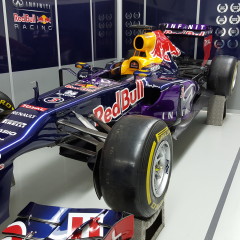
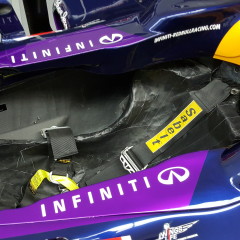
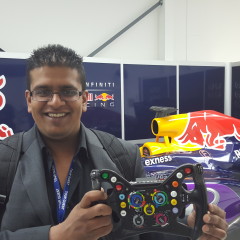
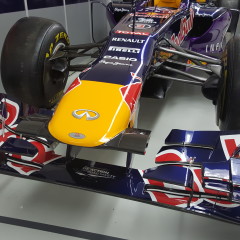













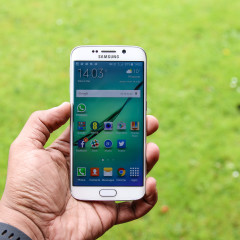
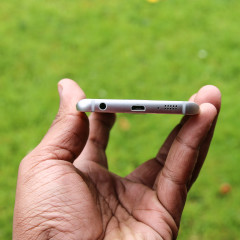
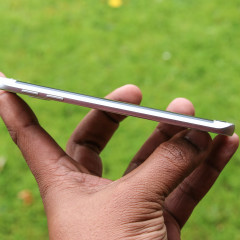

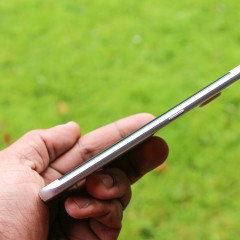

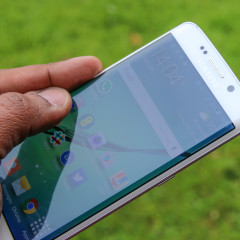
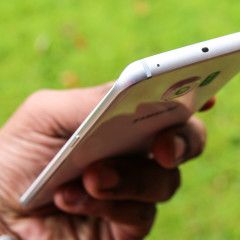
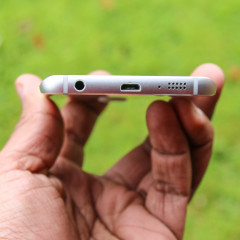
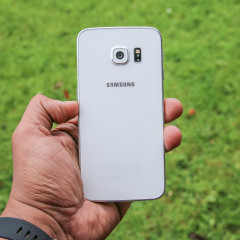

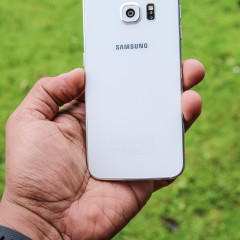


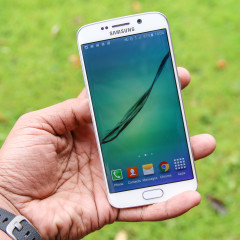
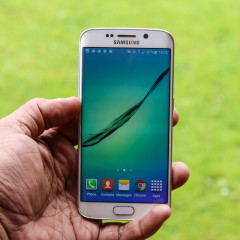









24 Comments - Add comment